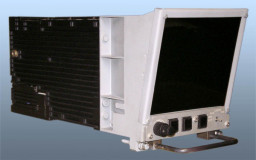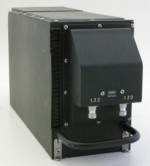The Tornado originally came in two variants; the Interdictor Strike Version (IDS) for the German, Air Force and Navy, Italian Air Force, and the Royal Air Force, and the Air Defence Variant (ADV) for the Royal Air Force only. Marconi-Elliott Avionic Systems provided a wide range of equipment for both variants.
• Digital Autopilot Flight Director System (AFDS)in conjunction with Aeritalia, Italy
• Command Stability Augmentation System (CSAS) in conjunction with Bodenseewerk, Germany
• Quadruplex Actuator Integrated into Fairey Hydraulics power control unit
• Stores Management System (SMS) in conjunction with Selenia, Italy
• Fuel Flowmeter System in conjunction with Teldix, Germany and OMI, Italy
• TV Tabular Display System in conjunction with AEG Telefunken, Germany
• Combined Radar and Projected Map Display (CRPMD) from Ferranti
• E-Scope Display System
• TACAN
• Triplex Transducer Unit
• Central Suppression Unit
• Engine Control Unit
By 1980 the Enhanced E-Scope Display (EESD) was under development. This was was a digital design with a frame store, rather than the analogue design and long persistence phosphor CRT of the original E-Scope Display (ESD). The EESD part number was 79-061-xx and this version was probably fitted to the majority of Tornado IDS aircraft.
RAF IDS variants were initially designated the Tornado GR1 with two variants called the Tornado GR1A and Tornado GR1B; the Tornado F3 was yet another version.
The contract covering the development and production investment for the Royal Air Force's mid-life update (MLU) for their 229 Tornado GRl and F3 aircraft was signed in April 1989. The upgrade included the following:
• Introduction of a new avionics architecture built around a 1553 databus.
• New sensors & Displays consisting of a Forward Looking Infra-red sensor, a Pilot's Multi-Function Display with digital map, wide angle HUD, Computer Symbol Generator, Video recording System and a Computer loading System.
• New Armament Control System consisting of a Stores Management System, a Weapon Interface Unit linked to a 1553 databus within a 1760 interface.
• A Night Vision Goggle compatible cockpit and the aircraft is also equipped with Forward Looking InfraRed (FLIR)
• Terrain Reference Navigation /Terrain Following Display/Terrain Following Switching & Logic Unit /Covert RadAlt.
Ferranti won the contract for the new HUD, Active Matrix Liquid Crystal Displays (AMLCD) to replace the TV Tabs, EHDD and E-scope. To support the new avionics a new Computer Signal Generator (CSG), with several times the computing capacity of the original Tornado main computer, and using the new high level ADA progamming language was procured
The Ferranti Nite-Op jettisonable NVGs were also procured under a separate contract.
In the event the MLU project stalled. In March 1993 a new Mid-Life Upgrade (MLU) project was launched and in1994 the UK signed a contract for MLU of GR1/GR1A/GR1Bs to GR4/GR4A standard.






